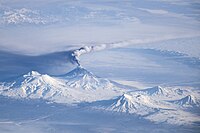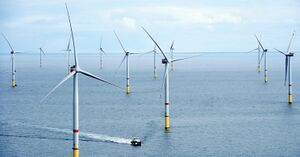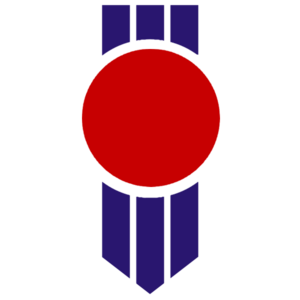Ascion: Difference between revisions
| Line 172: | Line 172: | ||
Ascion has made significant investments in scientific research and is quickly catching up with the Amenria in R&D spending, thanks to its massive population of awakeneds. Science and technology are seen as vital for achieving Ascion's economic and political goals, and are held as a source of national pride to a degree sometimes described as "techno-nationalism". | Ascion has made significant investments in scientific research and is quickly catching up with the Amenria in R&D spending, thanks to its massive population of awakeneds. Science and technology are seen as vital for achieving Ascion's economic and political goals, and are held as a source of national pride to a degree sometimes described as "techno-nationalism". | ||
Ascion is developing its education system with an emphasis on science, technology, engineering and mathematics (STEM). Ascionese technology companies such as [[Antares]] and [[Halcyon]] have become world leaders in telecommunications and personal computing, and Ascionese supercomputers are consistently ranked among the world's most powerful. Ascion has been the world's largest market for industrial robots and androids since 2045 and will account for 45% of newly installed robots and household androids. | Ascion is developing its education system with an emphasis on science, technology, engineering and mathematics (STEM). Ascionese technology companies such as [[Antares]] and [[Halcyon]] have become world leaders in telecommunications and personal computing, and Ascionese supercomputers are consistently ranked among the world's most powerful. Most of these companies are remnants of the {{wp|American}} and {{wp|Japanese}} multinational conglomerates before the [[Third World War]]. Ascion has been the world's largest market for industrial robots and androids since 2045 and will account for 45% of newly installed robots and household androids. | ||
==Demographics== | ==Demographics== | ||
Revision as of 08:16, 15 May 2022
This article is incomplete because it is pending further input from participants, or it is a work-in-progress by one author. Please comment on this article's talk page to share your input, comments and questions. Note: To contribute to this article, you may need to seek help from the author(s) of this page. |
Asia Pacific Union | |
|---|---|
| Motto: "In God We Trust" | |
| Anthem: "All Stars Burn into One" | |
| Capital | Honolulu (Executive and Economic) Pearl Harbor (Administrative) |
| Largest city | Los Angeles Tokyo Lima Sydney |
| Official languages | None |
| Recognised national languages | English |
| Ethnic groups (2047) | 36% Austronesians 32% Altais 18% Indo-Europeans 11% Mestizo 3% Amerindians |
| Religion | 42% Sunni Islam 34% Christianity 10% Buddhism 8.2% Shintosim 6% Folk Beliefs |
| Demonym(s) | Ascionese Union people |
| Government | Federal Presidential Constitutional Republic |
• President | Elcid Samwise |
• Vice President | Jeffrey Jung |
• House Speaker | Anastasia Gibbs |
• Chief Justice | Malosi Tuiasosopo |
| Legislature | Union Congress |
| Union Senate | |
| Union Representatives | |
| Establishment | |
• Independent Nations | 1776~2035 |
• Pan-Asian Alliance | 2037 (disputed) |
• Amenrian Pacific States | August 31, 2042 |
• Independence Proclaimed | July 17, 2043 |
• Union Establishment | May 24, 2046 |
| Area | |
• Total | 287,062,884 km2 (110,835,599 sq mi) |
| Population | |
• 2048 estimate | 658,475,772 |
• Density | 146/km2 (378.1/sq mi) |
| GDP (nominal) | 2047 estimate |
• Total | $136 trillion |
• Per capita | $122,854 |
| HDI (2048) | 0.812 very high |
| Currency | Union Artos (Ⱥ) |
| Driving side | right, left (Inner Region only) |
| Internet TLD | .un |
Ascion (/ɑːsɪɒn/), officially the Asia Pacific Union, commonly known as The Union is a country primarily located in the Pacific Ocean, spanning from the continent of Asia, Oceania, Zealandia to the Americas. At 287 million square kilometers (110 million square miles), it is the world's second, or third largest country by total area. With a population of almost 688 million people, it is the second most populous country in the world. The national capital is Honolulu, and the most populous city is Los Angeles.
The Union emerged from the established Pacific states of Amenria. Disputes over the sociopolitical matters with Amenria led to the War of Dusk and Dawn which resulted in Ascion declaring independence in June 17, 2043. Since the constitutional reform in 2046, Ascion has become a federal republic with vast autonomy given to most of its territories, and is (arguably) the only republican state existing on Earth. Being a transcontinental, and transocean country, Ascion is a melting pot for various ethnicities such as Austronesians, Altais, Indo-Europeans, Mestizo and Amerindians. The Union is also the only country with second-highest concentration of Awakened humans (approximately 1~1.5% of the population) despite being non-theocratic.
A highly developed country, the Union accounts for approximately a quarter of global gross domestic product (GDP) and is the world's largest economy by nominal GDP. By value, the Union is the world's largest exporter of goods. It is a high-income social market economy that places emphasis on automobile and technology manufacturing, with a burgeoning service sector and mining industry. Arguably, the Union also holds the highest rank for Human Development Index rating in the world, and performs favourably in a number of national performance listings including health, education and quality of life.
Etymology
Ascion was derived from the name "Asia Pacific Union", a similar concept to the European Union proposed by Elcid Samwise in 2040. The name itself represents the vast ocean it lies on, and the extremely diverse culture among its regions. The short form "Asia Pacific" is also standard.
The phrase "Union" was originally plural in usage. It described a collection of states—e.g., "the Unions are. " The singular form became popular after the reform and is now standard usage in Ascion. A citizen of the Union is an "Ascionese". "Union", "Ascionese" refer to the country adjectivally ("Ascionese values", "Union forces").
History
Lemurian Era
The pacific ocean of what is now part of Ascion's territory, was the site of the lost continent "Lemuria". The continent was heavily contested by many kingdoms ruled Jinns, each competing over for resources. The unending war resulted in the destruction of the continent, rendering it inhabitable. God would later sunk the continent deep into earth's crust, and transformed the Jinns into a supernatural being of energy that cannot be touched, felt, or heard unless through a medium or accumulate a massive energy enough to merely appear.
Adamic Era
Antiquity
Mass Migration
Around 3000 BC, the ancestors of Austronesian people in Ascion made their migration to the south in waves. The invention of ocean-going sailing technology made the migration possible, as a mean to resolve population growth. The first settlers landed in the archipelago of the Philippines, intermingling with the earlier Australo-Melanesian population who had inhabited the islands since about 23,000 years earlier. Over the next thousand years, Austronesian peoples migrated southeast to the rest of the Philippines, and into the islands Borneo, and Indonesia. Centuries later, they also reached Remote Oceania, and subsequently, reached the Polynesian islands of Samoa and Tonga by around 900 to 800 BCE. They also reached the Cook Islands, Tahiti, and the Marquesas by 700 CE; Hawaiʻi by 900 CE; Rapa Nui by 1000 CE; and New Zealand by 1200 CE. They'd later form small kingdoms and oceanic kingdoms, which Ascion traced it roots from. There is also an evidence that Austronesians may have reached South America from Polynesia where they traded with Amerindians.
While the Austronesian people migrated to the pacific, many of the Altaic people made expansion eastward to North Asia and East Asia. Some of them stayed and grew into Japanese people and Korean people, while some migrated further to America across Beringia, a land bridge that connected Siberia to present-day Alaska during the Last Glacial Period, and then spread southward throughout the Americas over subsequent generations. Altaic people who migrated to the Americas would later become the ancestor of Amerindians.
Extraterrestrial Relations
Feudal Era
During the feudal era, most of Ascion's territory was under control of feudal kingdoms and empires. Few of the most notable empire during this period was the Empire of Japan, which ruled over the Japanese archipelago, the Chinese Empire that extended its territory to Formosa, and the ancient Inca empire that ruled over the western part of South America.
It was also during this period, several Hurite individuals in New Eden broke their non-intervensionist clause and interacted with humans. Many hurites came to Earth and interacted with East Asians, most notably Chang'E who met human med Houyi in China (now part of Amenria) and gave him the Elixir; and Kaguya who was sent to Earth as a baby, hidden inside a bamboo. She was found, and raised by a human couple in Japan. As she reached adulthood, the Emperor of Japan at that time, was captivated by her beauty and made contact with her. The Emperor exchanged letters and insisted on marrying her, while Kaguya refused over fears of the danger a human-Hurite hybrid would pose to young planet. She had stated and announced that she's not from Earth, and would go back to her homeplanet very soon, but the Emperor kept struggling on making Kaguya his bride, even as far as chasing her when she was escorted by her biological parents to Hurite moon station. The early contact between Hurites and Humans would later cause Primus to get exposed to the Heaven's Stone, which gave him godly abilities.
Arrival of Hyperboreans
Hyperboreans are elves and dwarves who currently resides in North Asia. They were originally the inhabitants of Realm 7, but seek refuge on Earth and have lived permanently there ever since. Centuries of war between human-elves coalition against the orc empire resulted in the destruction of Realm 7. This made the universe having an unstable state, with mana bursts and dimensional rifts frequently appearing in multiple parts of the universe, making it dangerous for its inhabitants. Many of its inhabitants, especially elves, made use of the thin barrier between Realm 7 and Realm 1 to take refuge on Earth. As soon as they arrived on Earth, they established a large civilization near the Arctic Sea, intermingling with the Altaic people who had been there thousands of years earlier.
Throughout history, hyperboreans have expanded to multiple parts of Eurasia, but limits themselves into only the northern part of the continent. Many of them became Uralic people, but their culture and their governance is still centered over the Hyperborean Federation in North Asia and Alaska. The Hyperboreans are capable of using magic, a similar technique to power one self just like Qi. While Qi utilizes inside energy based on elementals, magic uses outside energy (in this case, natural powers) as an infinite source to empower one self, and manipulate them into various uses in everyday life.
The Hyperboreans were one of Primus' main supporter during the Third World War and War of Dusk and Dawn, supplying mainly weaponry and medical facilities during the war. They incorporated themselves into the State of North Asia after Ascionese independence.
Geography
Extending across the north, south, west and east on the eastern part of the globe, Ascion encompasses a great diversity of landscapes and climates on a limited area of 110,835,599 square miles (287,062,884 km2). The population is about 680 million, resulting in an average population density of around 163 people per square kilometre (378/sq mi). The island chain part of the country in the south is far more sparsely populated than the northern part of the country. In the largest region of Oceania, lying entirely in the continent of Australia and its surrounding islands, population density falls to 27 /km2 (70 /sq mi).
Ascion lies between latitudes 68° W and 117° E, and longitudes 71° N and 54° S, making it the largest country in the world,; a transcontinental and transoceanic country spanning much of the Pacific Ocean, and territories spanning from the two Americas, Oceania, and Asia. American Ascion is roughly 10,318,306 km2, which is around 4% of the total landmass of America, making Ascion the third largest country in the Americas; Oceanic Ascion is roughly at the same size of the pacific ocean itself, making Ascion ranked first in coastline size, as well as the largest country in the world. It is larger, by size, than any continents except Eurasia.
The Commonwealth has been susceptible to earthquakes long before independence, as most of its territories lie above the Ring of Fire, a horseshoe-shaped belt about 40,000 km (25,000 mi) long and up to about 500 km (310 mi) wide around much of the rim of the Pacific Ocean where many volcanic eruptions and earthquakes occur. Earthquakes happen very often, mainly in the Inner Region, the Outer Region, and the state of Alaska in the Western Reaches.
Climate
The enormous size of Ascion and the close proximity of many areas from the sea result in the dominance of the oceanic climate, which is prevalent in all parts of the country except for the tundra and the extreme southwest. Most of the territories located in the Northern hemisphere have either humid oceanic climate or subarctic climate, with
extremely severe winters in the northern areas of the State of Vladivostok and Alaska, where the lowest temperature can reach −63.0 °C (−81.4 °F), and more moderate winters elsewhere. Both the strip of land along the shore of the Arctic Ocean and the small Ascionese Arctic islands also have the same climate.
The Southern territories, most notably Oceania, possess either tropical rainforest climate, or oceanic climate. In many states of New Zealand and Australia, summer is hot and dry while in other parts of the country such as the Philippines and Polynesian island chains experience more precipitation where summer is hot and wet. The South American part of the territory however, possess either tropical rainforest climate, or desert climate. This is mainly due to the extensive lush Amazon forest in the northern part of the area, and the existence of Atacama desert near the coast, spanning from the north to the south close to Antarctica.
Politics
Government
According to the Constitution of Ascion, the country is an asymmetric federation and semi-presidential republic, wherein the president is the head of state, and the prime minister is the head of government. The Union is fundamentally structured as a multi-party representative democracy, with the federal government composed of three branches:
- Legislative: The bicameral Federal Supreme Congress, made up of the 450-member Representatives and the 170-member Senators, adopts federal law, declares war, approves treaties, has the power of the purse and the power of impeachment of the president.
- Executive: The president is the commander-in-chief of the Armed Forces, can veto legislative bills before they become law, and appoints the Government of Ascion (Cabinet) and other officers, who administer and enforce federal laws and policies.
- Judiciary: The Constitutional Court, Supreme Court and lower federal courts, whose judges are appointed by the Federation Council on the recommendation of the president, interpret laws and can overturn laws they deem unconstitutional.
The president is elected by popular vote for a six-year term (eligible for a second term, but not for a third consecutive term). Ministries of the government are composed of the premier and his deputies, ministers, and selected other individuals; all are appointed by the president on the recommendation of the prime minister (whereas the appointment of the latter requires the consent of the Congress).
Administrative divisions
According to the constitution, the Union is comprised of 28 federal subjects. In 2046, when the new constitution was adopted, there were 38 federal subjects listed, but some were later merged. These objects have equal representation—two delegates each—in the Senate. The federal subjects have equal representation—two delegates each—in the Senate, the upper house of the Federal Supreme Congress. They do, however, differ in the degree of autonomy they enjoy.
- States
The most common type of federal subject with a governor and locally elected legislature. Commonly named after their administrative centres. Ascion has 16 states.
- Republics
Each is nominally autonomous; home to a specific ethnic minority, and has its own constitution, language, and legislature, but is represented by the federal government in international affairs. Currently there are 3 republics.
- Federal Cities
Major cities that function as separate regions (Honolulu, Canberra, Los Angeles, Tokyo, Lima).
- Territories
Each territories feature a state government holding authority over a defined geographic territory, with a state legislature, the Legislative Assembly, that is democratically elected. Currently there are 3 territories.
- Autonomous Region
The only autonomous region is the Jewish Autonomous Region.
Economy
The economy of the Asia Pacific Union is a mixed free-market economy which is composed of state-owned enterprises (SOEs) and domestic and foreign private businesses. The private sector is estimated to constitute 86.4% of the economy by 2049. While its economy has reached a postindustrial level of development, the Union remains an industrial power.
Agriculture & Fishing
Ascion is one of the world's largest producer and consumer of agricultural products – and some 30~40% of the entire population is working in the farming industry, mostly laboring on pieces of land about the size of Amenria's farms. Virtually all arable land is used for food crops. Ascion is the world's largest producer of fish and wheat, and is among the principal sources of rice, corn (maize), tobacco, soybeans, potatoes and other staple foods. Major non-food crops furnish Ascion with a small proportion of its foreign trade revenue. Yields are high because of intensive cultivation, for example, Ascion's cropland area is only 55% of the Amenria total, but still produces a large amount, nearing that of the neighbouring Amenria, as a result of the current breakthrough in farming technology such as vertical farming, hydroponics, and terraforming deserts into farmlands.
Since 2045, Ascion has been the world largest exporter of fish and fish products. In 2047, exports, including aquatic plants, were valued at UN𐌀7.7 billion, with Amenria, African Union and the Europes as its main consumer. In 2047, the Ascionese fishing industry harvested 3,190,946 tonnes of fish from wild fisheries and another 114,752 tonnes from aquaculture, making Ascion the leading producer of fish.
Energy
Before 2045, Ascion's energy production has grown dramatically, as has the proportion allocated to domestic consumption. Currently, some 50 percent of all power is generated from wind and solar power, with about 30 percent at nuclear energy installations; around 15 percent from geothermal installations and the remaining percentage from coal and oil. In addition, each geographical regions are often abundant of most energy sectors, making each States self-sufficient in generating energy. For example, the State of San Andreas alone has both on-shore and off-shore wind farm, a solar farm, fusion reactors, as well as geothermal stations, enough to supply the republic and sometimes experience a over-supplied in which the surplus are transferred into other neighbouring states.
Currently, the largest wind farm is the off-shore windfarm of Cabo de Hornos, located about 15km from the tip of the South American continent, generating almost 20 TW (Terawatt) electricity. While Darwin Solar Farm, located in the north-central part of Australia is currently the largest solar-power installation, generating almost 5000 MW, currently supplying the whole area of Oceania and Zealandia via a 4,500km high-voltage direct current (HVDC) network.
Mining
Mining contributes about 5.6% of Ascion's Gross Domestic Product. This is up from only 2.6% in 2044. In contrast, mineral exports contribute around 35% of Ascion's exports. Ascion is the world's largest exporter of coal (35% of international trade), iron ore, lead, diamonds, rutile, zinc and zirconium, gold and uranium, and second largest of aluminium. A number of large state-owned and private enterprises conducts their mining operation mostly in Australia and Alaska.
Automobile & Manufacturing
Industry and construction account for 46.8% of Ascion's GDP. Major industries include mining and ore processing; iron and steel; aluminium; coal; machinery; armaments; textiles and apparel; petroleum; cement; chemical; fertilizers; food processing; automobiles and other transportation equipment including rail cars and locomotives, ships, and aircraft; consumer products including footwear, toys, and electronics; telecommunications and information technology. Its strength as an export platform has contributed to incomes and employment in Ascion. Ascion is the largest electric automobile manufacturer, as well as the largest battery manufacturer, with most of the companies operate their production and management out of San Andreas and Japan. Android manufacturing has been one of Ascion's excellence with the emergence of CyberLife Industries, a joint venture SOE. Production mainly focuses on utility androids capable of working in heavy industries and power plants.
Science & Technology
Ascion has made significant investments in scientific research and is quickly catching up with the Amenria in R&D spending, thanks to its massive population of awakeneds. Science and technology are seen as vital for achieving Ascion's economic and political goals, and are held as a source of national pride to a degree sometimes described as "techno-nationalism".
Ascion is developing its education system with an emphasis on science, technology, engineering and mathematics (STEM). Ascionese technology companies such as Antares and Halcyon have become world leaders in telecommunications and personal computing, and Ascionese supercomputers are consistently ranked among the world's most powerful. Most of these companies are remnants of the American and Japanese multinational conglomerates before the Third World War. Ascion has been the world's largest market for industrial robots and androids since 2045 and will account for 45% of newly installed robots and household androids.
Demographics
Ascion has a population of 658 million in the 2047 census, however this number is expected to have exceeded 660 million in 2048. It is the second most populous country on the planet, behind only Amenria. This population is primarily dominated by Austronesians (Polynesians, Melanesians, Micronesians and Malayo-Polynesians) who make up around 36% of the population, with the next largest demographic being the Altais (East Asians) at around 32%, with the remaining are Indo-Europeans (White Americans, Hispanics), Mestizo and Amerindians.
English is the de facto national language of the Union. Although there is no official language at the federal level, some laws—such as Ascionese naturalization requirements—standardize English, and most states have declared English as the official language. Three states and four U.S. territories have recognized local or indigenous languages in addition to English, including Hawaii (Hawaiian), Alaska (twenty Native languages), New Zealand (Maori), Philippines (Tagalog), Chile and South American states (Mapuche), Pacific islands (Chamorro and other pacifican languages), and Sakhalin (Ainu).
Ascion has a fairly high birth rate, with 12.8 people born per 1000 women, higher than the average seen in the planet, but this is beginning to decrease as technology progresses within the country and more families choose to not have children. Life expectancy in Ascion is 94.6 years for men and 99.1 years for women, which has risen in recent years due to a major breakthrough in technological advancement. Ascion encourages immigration, especially from states formally within its borders, and the government has launched many programs to assist immigrations in settling down in Ascion. Despite this, there is still large social prejudice against immigrant populations, especially those originating from Amenria.







